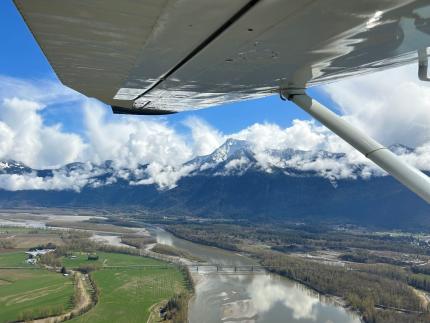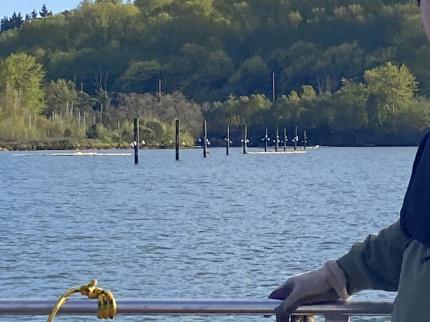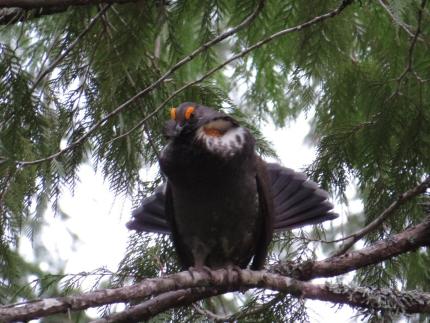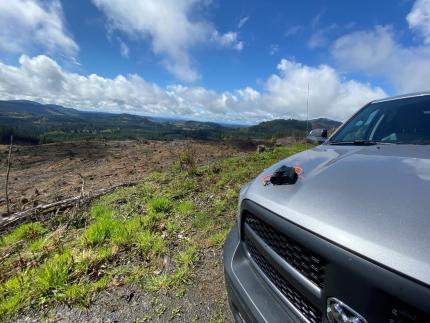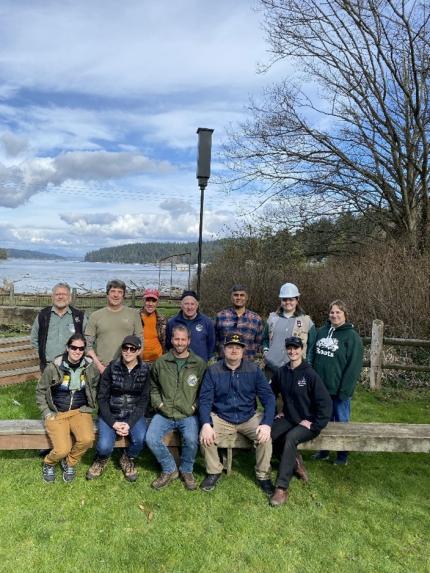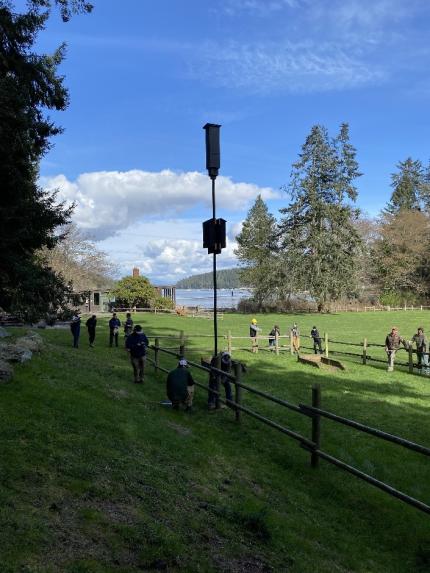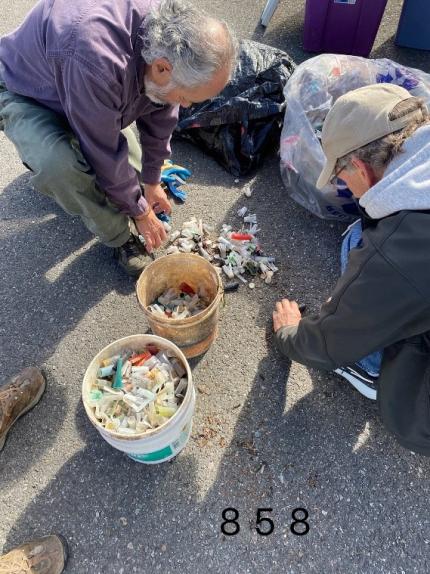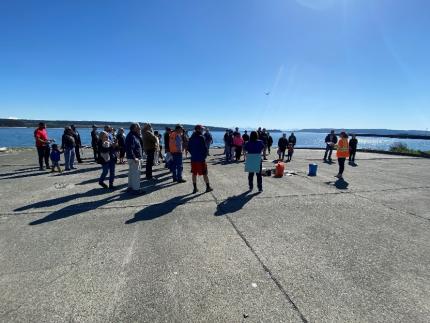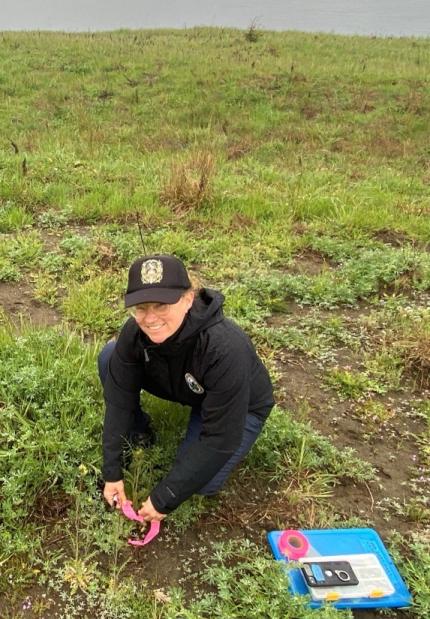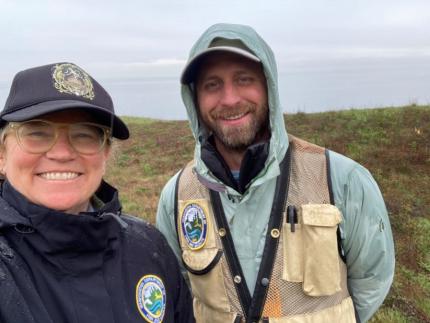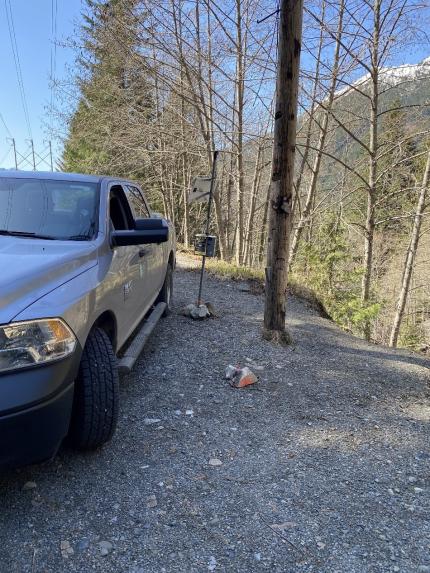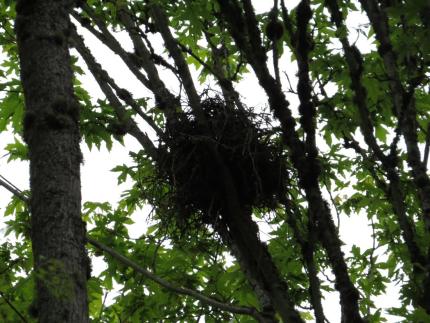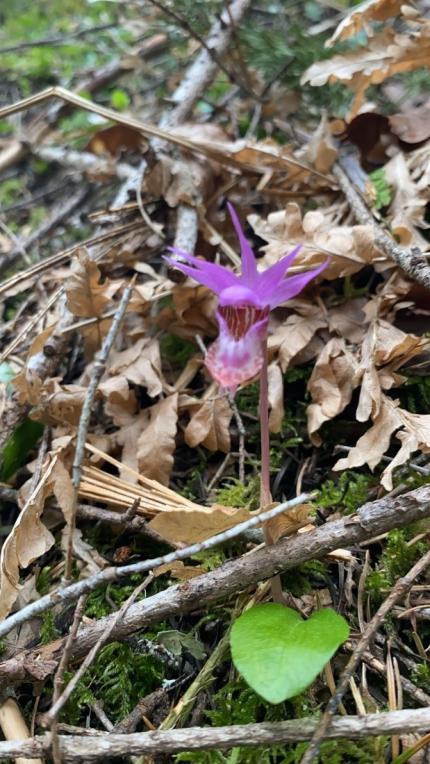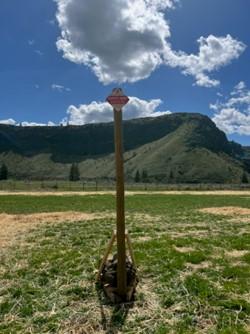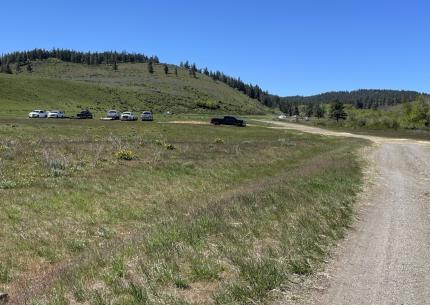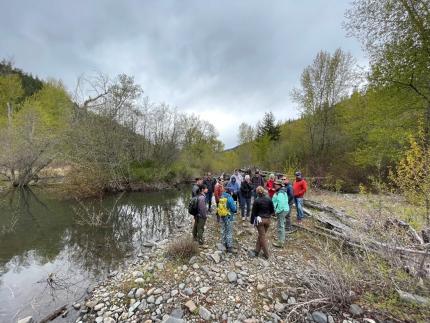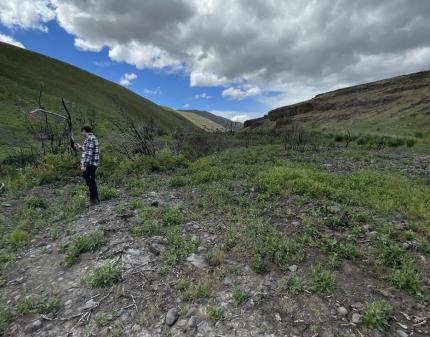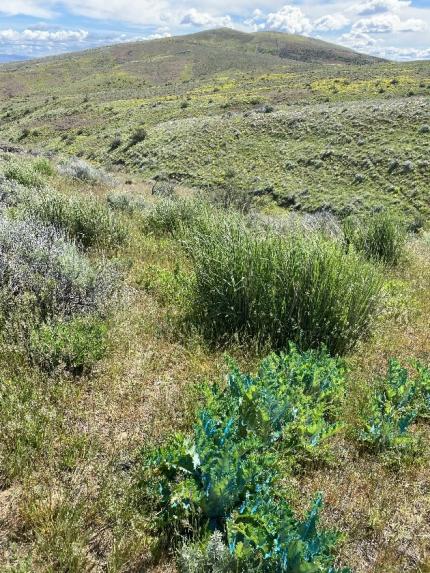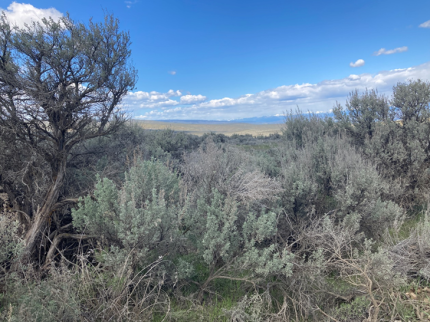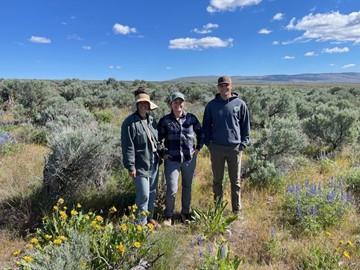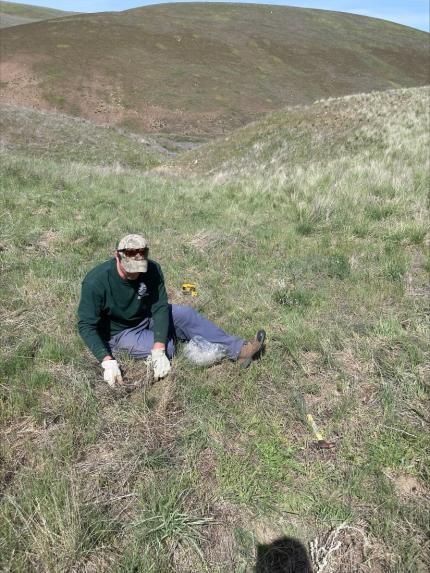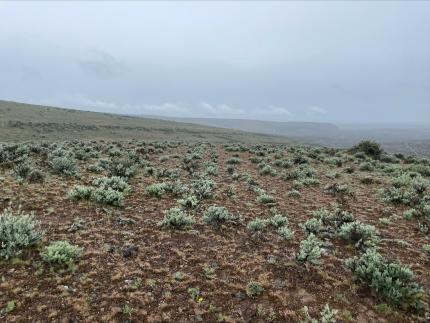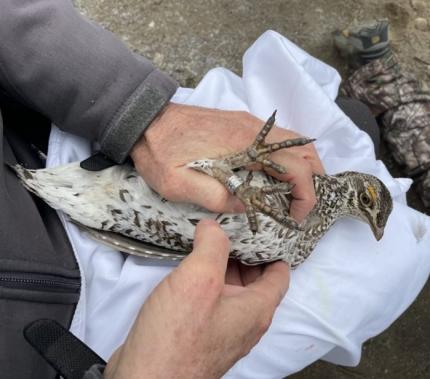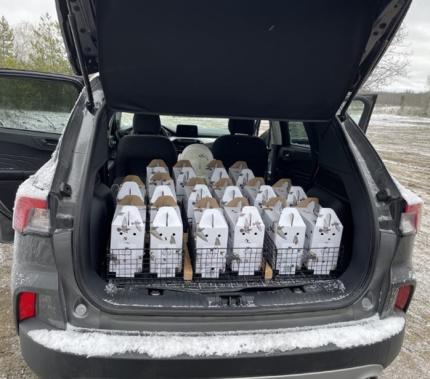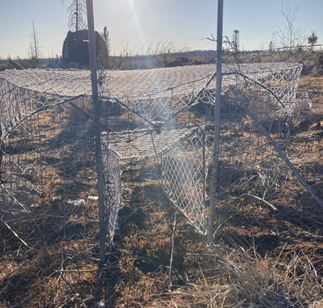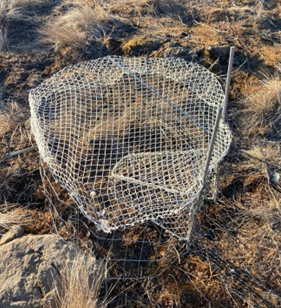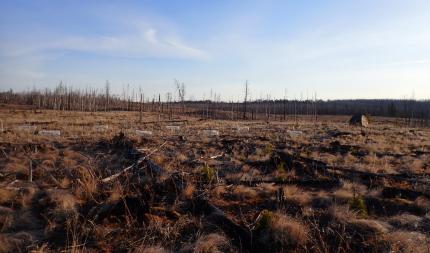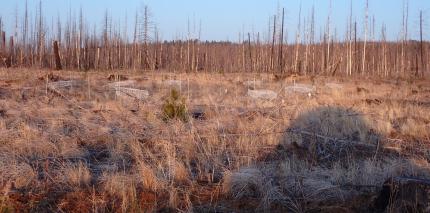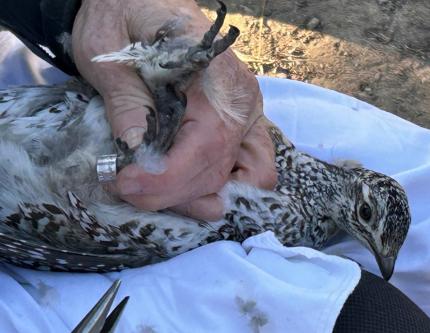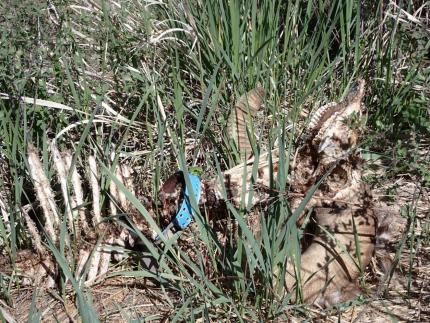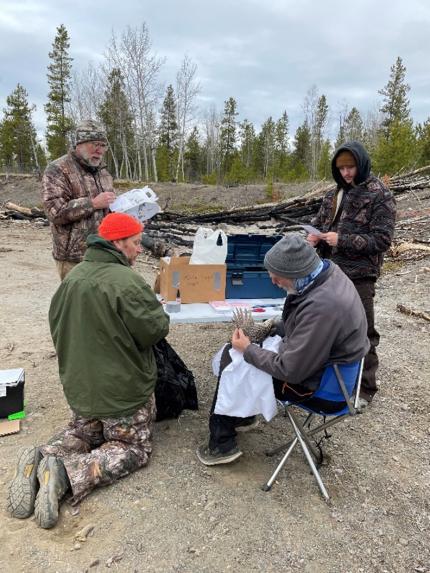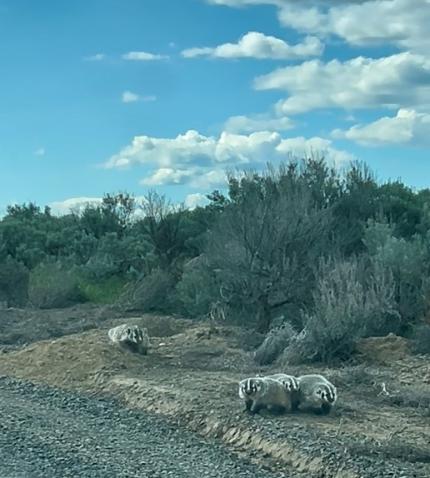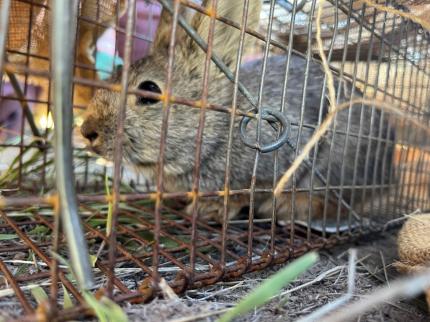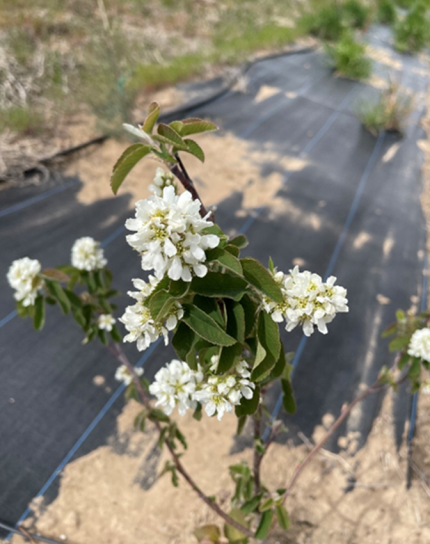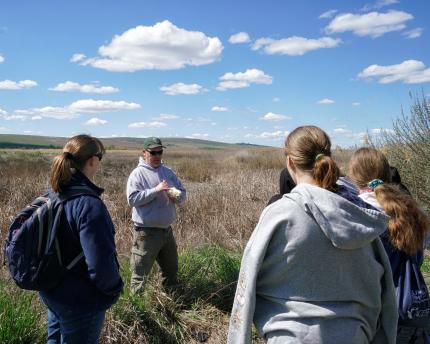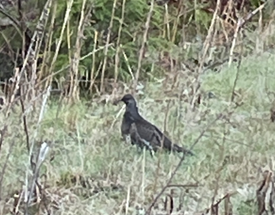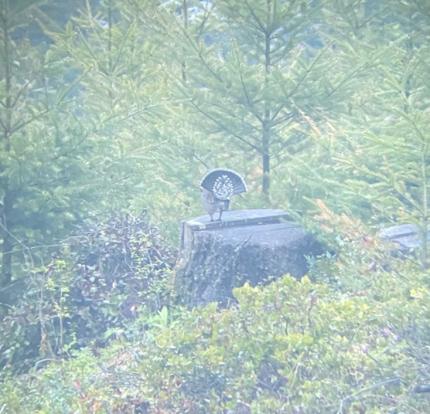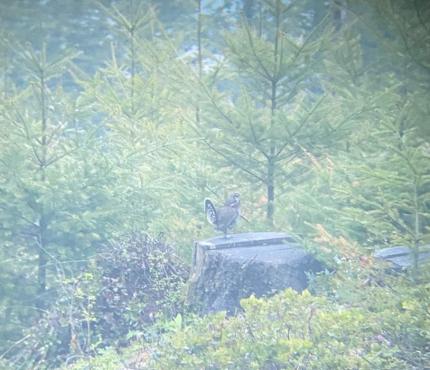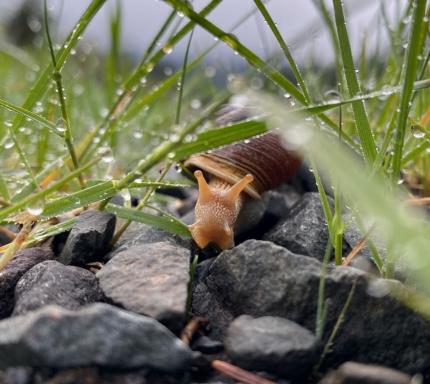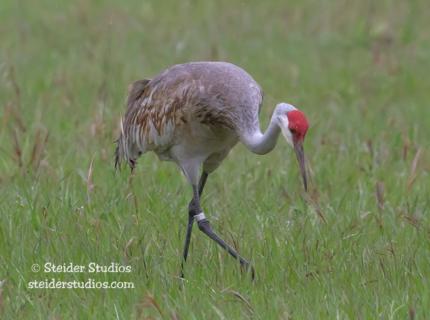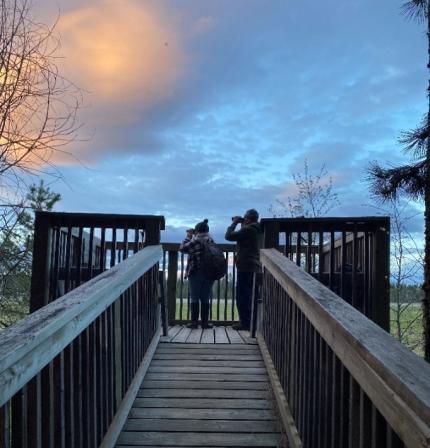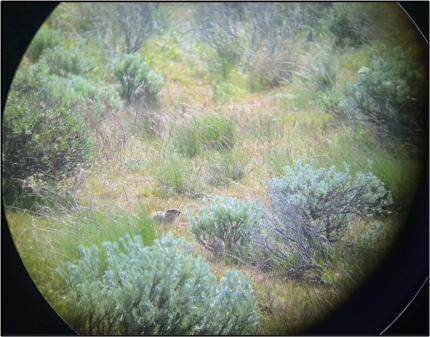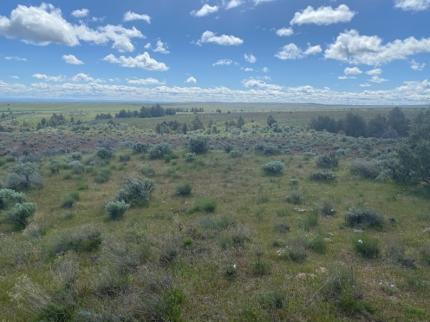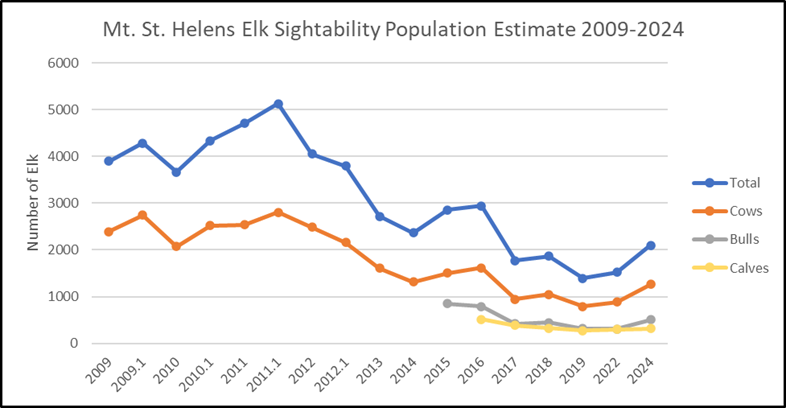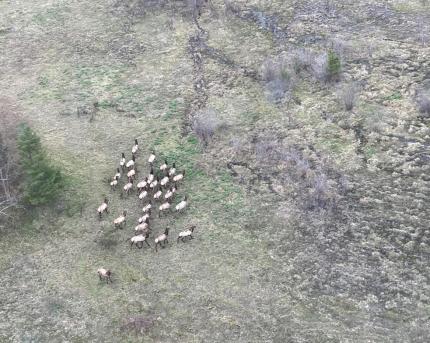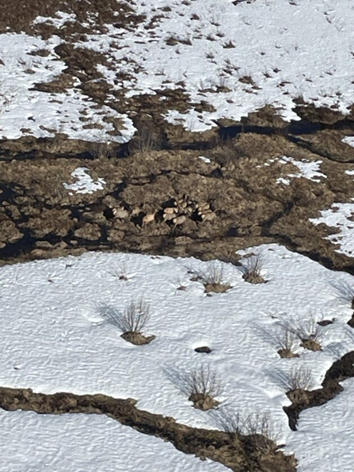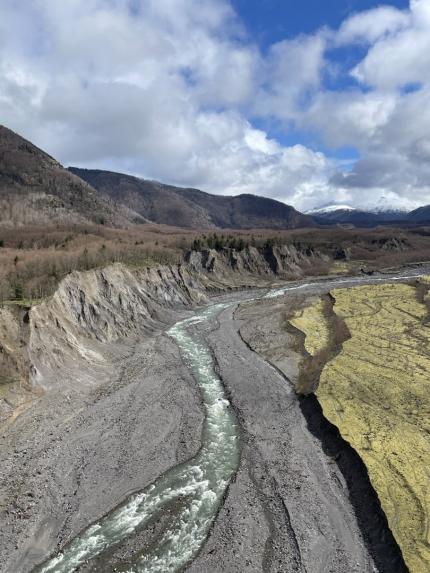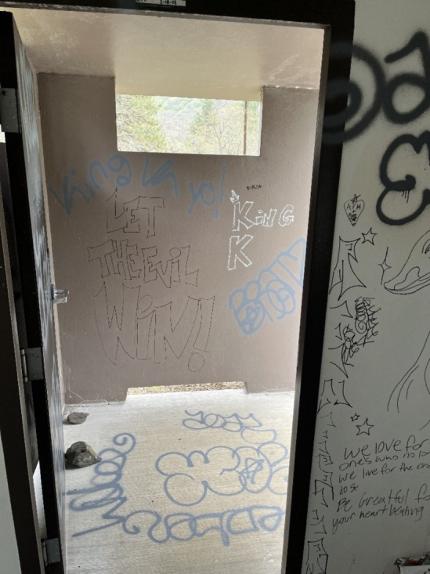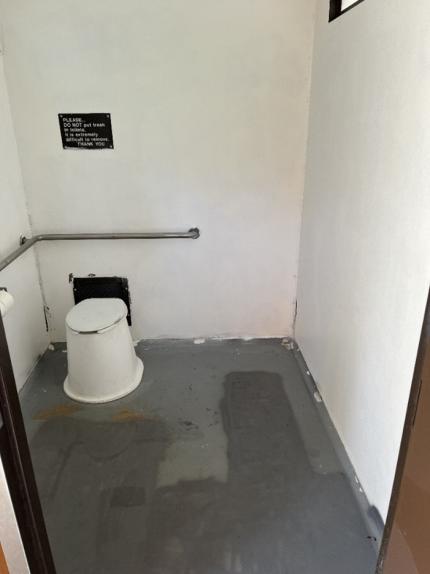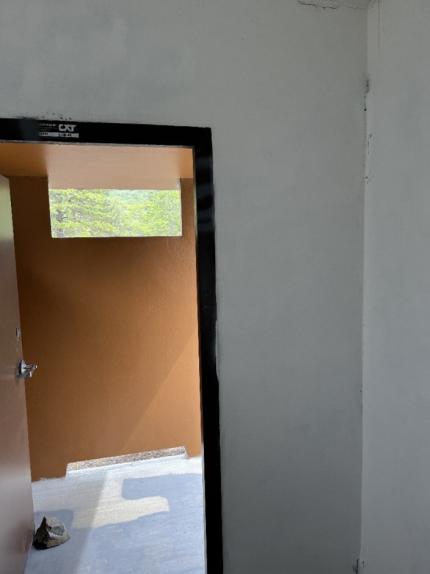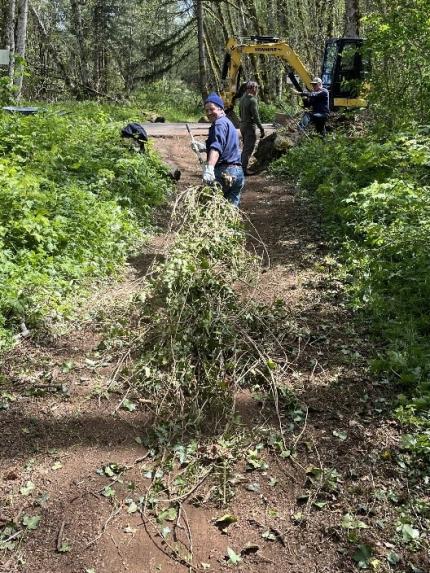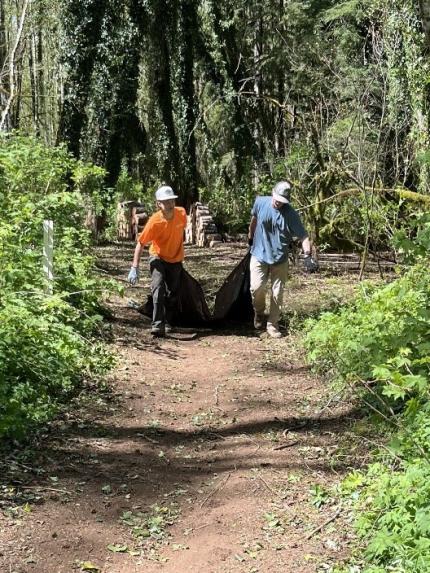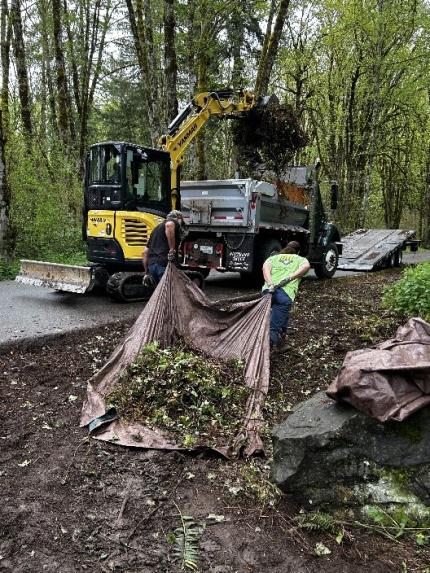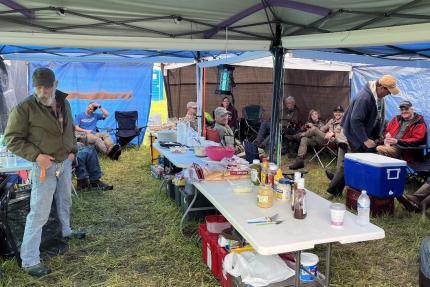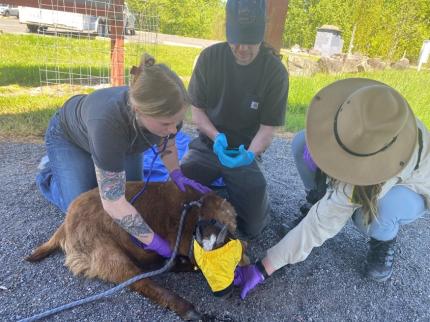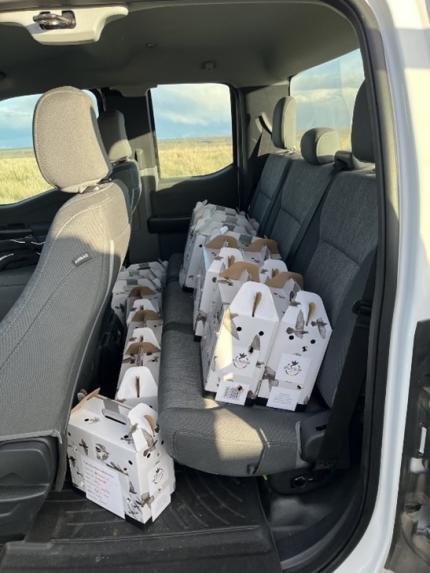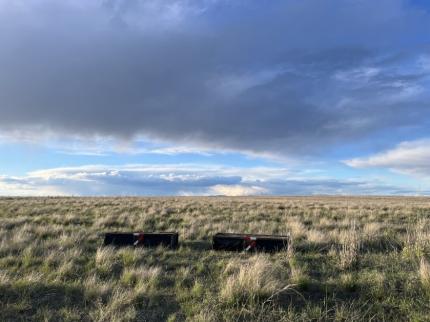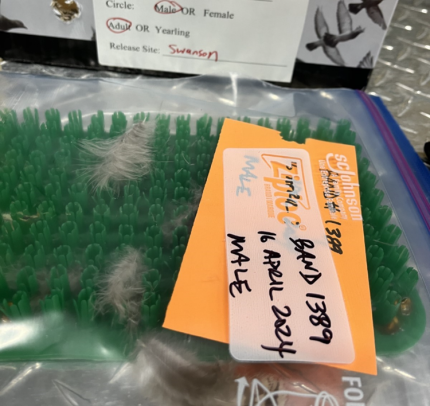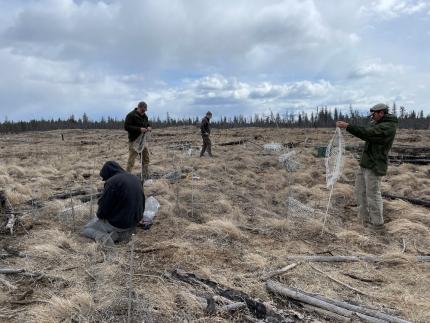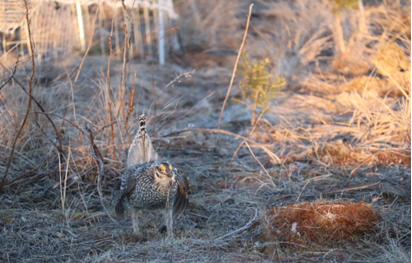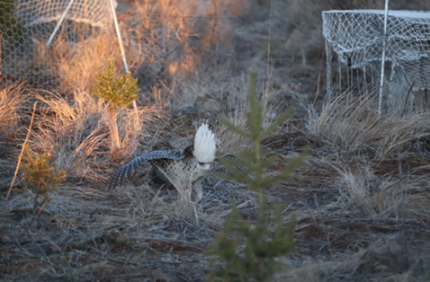Biweekly report Apr16-30 2025 - Region 3 (South Central)
Managing Wildlife Populations
District 8 Townsend’s Ground Squirrel Monitoring: District 8 Biologist Wampole and Assistant Biologist Wilson are learning to use AudioMoth devices and developing a protocol to confirm whether historic ground squirrel colonies are inactive. By leaving the acoustic recording units (ARUs) out longer, they can better detect calls. The biologists are also testing how far the devices can capture sound. This technology is already being used to monitor species like grouse and bullfrogs because of its utility to increase detection of a species which is especially critical for managing endangered and threatened, or invasive species.
L.T. Murray Townsend’s Ground Squirrels: L.T. Murray Wildlife Area Manager Morrison and Assistant Manager Winegeart found more Townsend’s ground squirrel sites on the Whiskey Dick Unit. The population seems to be very healthy.
District 4 Amphibian Monitoring: District 4 Biologist Hoffman conducted acoustic surveys for sensitive amphibians on the Sunnyside-Snake River Wildlife Area. Dip-netting and transect surveys will extend through the spring as a part of a larger inventory of reptiles and amphibians on the Wildlife Area.
Providing Recreation Opportunities
Wenas Wildlife Area – Seasonal Road Closure Openings: Gates to seasonal road and area closures are now open as of 6:00 am May 1, 2025.
Oak Creek Wildlife Area – Seasonal Area Closure Openings: Seasonal gates and closure areas were opened on the wildlife area at 6 a.m. May 1. Eager recreationists began filtering into the Oak Creek parking area in anticipation of the opening beginning Monday April 29. Friends of Oak Creek volunteer members were also present to answer questions, oversee logistics for visitor parking, and assist in gate opening and user counts. At Oak Creek, there were 82 vehicles, six motorcycles, 15 ATVs, and 22 hikers through the gate the morning of May 1. There were 29 vehicles, 11 horses, and 48 hikers entering the Cowiche Unit closure area.
L.T. Murray Wildlife Area Road Maintenance: L.T. Murray Wildlife Area Assistant Manager Winegeart worked with Archaeologist Davis and Capitol and Asset Management Program Project Supervisor Gallagher with beginning a road maintenance project on a 12-mile section of road on the Whiskey Dick Unit. Natural Resource Technician Blore and Natural Resource Specialist Nass built rock jacks and posted signs at multiple points to direct vehicle traffic to appropriate areas.
Providing Conflict Prevention and Education
Kittitas County Conflict: Elk are migrating in significant numbers westward following substantial green up in the past two weeks. Elk are hanging up in some private land areas and have been more difficult to move.
Yakima County Conflict: Elk were in an orchard near Cowiche this winter and a damage assessment was completed this week.
An elk fence repair is ongoing in the Tampico area.
A bear found its way into the city of Yakima near Cottonwood Middle School. The bear was relocated to more suitable habitat.
District 8 Conflict - Depredations: Many lambs have been killed, likely by coyotes, at a large sheep farm. Efforts to reduce depredations are ongoing.
A livestock owner called about depredations on his new piglets. It was determined that common ravens were killing newborn piglets.
Conserving Natural Landscapes
Wenas Wildlife Area - Shrub Planting: Wenas Wildlife Area Habitat Biologist Miller, Lands and Recreation Specialist Frame, Natural Resource Technician Janes, and Assistant Manager Taylor planted approximately 1,250 plugs of big sagebrush, antelope bitterbrush, and golden currant. These native plants will provide feed and cover for wildlife and support soil health.
Wenas Wildlife Area – Illegal Garbage Dump Clean-Up: Wenas Wildlife Area Lands and Recreation Specialist Frame removed 660 pounds from an illegal garbage dump located on Roza road. The removal totaled to 21 40-gallon bags of garbage, a twin-size mattress, wood material, and a TV. Evidence such as letters, power bills, and magazines with the same address were collected at the scene and turned into enforcement.
Wenas Wildlife Area – Observatory Thinning: Forest health restoration efforts are underway in the Observatory area on the Wenas Wildlife Area. Thinning is projected to be completed by mid-June 2025.
Sunnyside Volunteer Shrub Planting: The Sunnyside/Snake River Wildlife Area Headquarters Unit recently hosted a volunteer event with the Washington chapter of Backcountry Hunters and Anglers planting native shrubs. Even with a smallish turnout (due to coinciding with the turkey hunting opener), they planted around 300 shrubs including juniper, serviceberry, Pacific willow, and mock-orange.
Colockum Judy’s Park Too Proposed Thinning: Colockum Wildlife Area Manager Gray met with the forestry team, District 8 Biologist Wampole, and Habitat Biologist Weekes regarding the proposed thinning project, Judy’s Park Too. The thinning prescription, objectives for the thinning, and additional factors of the project being considered were discussed. The main goal of the project is to benefit wildlife habitat and in turn fire mitigation will also be an outcome of the project. One factor talked about was the potential for northern goshawks to be in the area. Biologists are planning to go out and conduct a survey near a historic nest site towards the end of May.
Oak Creek Wildlife Area - Weed Control and Grazing Monitoring: Oak Creek Wildlife Area staff members began spring weed control operations with backpack spot spray herbicide applications. Along with this comes rangeland evaluation monitoring and utilization monitoring on Oak Creek’s three grazing allotments. Oak Creek Wildlife Area Manager Mackey, Technician Venema, and Worker Floyd assisted Range Ecologist Tawril with evaluation monitoring on the Cowiche Unit.
L.T. Murray Wildlife Area Forest Health: L.T. Murray Wildlife Area Natural Resource Technician Blore and Assistant Manager Winegeart used a backhoe and two water tanks to assist Statewide Forestry Specialist McRae and Lauffer with cooling a Hutchins Forest thinning project slash pile which had begun to burn again after months of being under two feet of snow. All it took was 1,100 gallons of water and moving some ash around.
Providing Education and Outreach
Salmon Summit: Region 3 Private Lands Biologist Manderbach, Sunnyside/Snake River Wildlife Area Assistant Manager Jahns, Natural Resource Technician Pizzini, and regional Fish Program staff members attended the annual Salmon Summit event in Columbia Park. Fourth graders from numerous Benton County elementary schools had the opportunity to release their classroom-reared salmon smolts into the Columbia River and rotate through educational stations throughout the day. WDFW’s booth was a favorite stop! The students learned about the salmon lifecycle, pit-tagging, and native wildlife and habitat before exploring the pelts, skulls, and other interesting materials. It was fun and encouraging to see how excited they were about Washington’s fish and wildlife!
Oak Creek Wildlife Area - Toppenish Garden Club Presentation: Oak Creek Wildlife Area Manager Mackey spoke at a quarterly Garden Club gathering. Toppenish Garden Club hosted the meeting, but there was membership present from all over the Kittitas and Yakima valleys. Mackey spoke about eastside forest ecology, the role of historic wildfire in the area, as well as elk reintroduction and conflict with modern commercial agriculture.










































